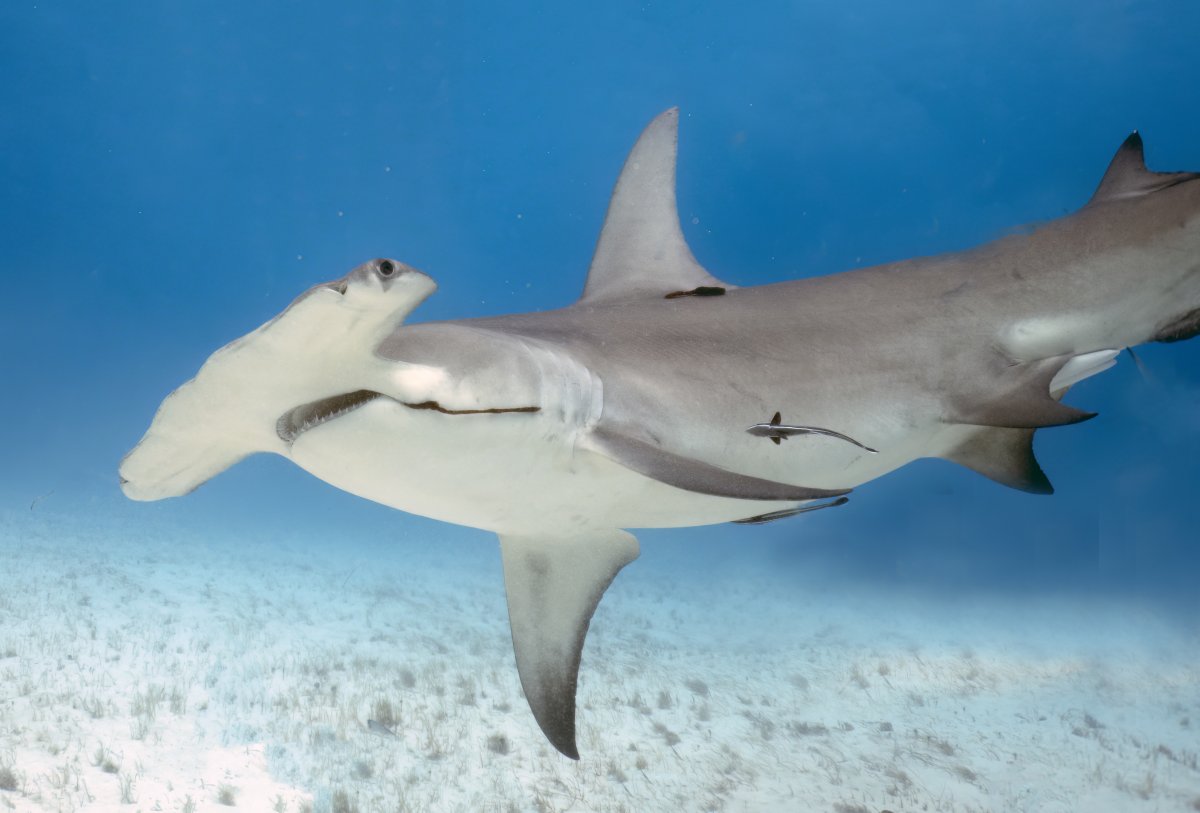Female great hammerheads have been found to gather together in large numbers around the full moon.
These sharks were found to cluster together in the tropical waters of French Polynesia during the Southern Hemisphere summer, between December and March, with their numbers peaking when the moon was full.
Strangely, no males seem to be invited to these gatherings, new research in the journal Frontiers in Marine Science reveals.
The scientists recorded 55 of the critically endangered great hammerheads gathering at two Pacific atolls in the summers of 2020 and 2021, "representing an unprecedented number of S. mokarran in one study," according to the paper.

Fifty-four of these sharks were confirmed female, while one could not be determined. This is unusual as great hammerheads are usually a solitary species, rarely spending time with other members of their kind.
"This study, conducted in situ with non-invasive methods offers a unique opportunity to study a great hammerhead shark population in a near-pristine ecosystem and provides important life-history elements for the Central Pacific region," the authors wrote in the paper.
Great hammerheads are the largest of the nine hammerhead shark species, reaching an average of 13 feet long. These sharks spend a lot of time alone, and migrate great distances in tropical waters. Listed as critically endangered on the IUCN Red List, these sharks face great peril, mostly due to overfishing.
These sharks were recorded gathering at two sites: the Rangiroa atoll and Tikehau atoll of the Tuamotu archipelago of French Polynesia. Many of the sharks spent up to six days every month at these sites throughout the summer months, peaking before, during and after the full moon.

This is theorized by the researchers to be because the brighter moonlight allows them to better hunt around the atolls, which are ring-shaped islands or coral reefs.
The researchers also suggest that another reason for these gatherings may be responses to the changes in Earth's geomagnetic field with the changing phases of the moon, or in tandem with higher numbers of one of their prey species, the ocellate eagle ray.
"The gathering of A. ocellatus is thus a predictable event that sharks could try to intercept, indicating that predation is a likely driving factor of the seasonal presence of great hammerhead sharks," the authors wrote in the paper.

Male and female segregation has not previously been seen in great hammerheads, but has in scalloped hammerhead sharks. The absence of the males during this period may also imply that these gatherings are involved somehow in the sharks' mating cycle.
"Lagoons and their protected warm-shallow-coastal waters are known to serve as nursery areas for various shark species," the researchers wrote.
The exact reason for these gatherings remains unconfirmed, but these findings reveal an important site for these critically endangered creatures that needs protection if the species is to survive and thrive.
"The results of this study highlight the importance of these atolls for the conservation of great hammerhead sharks, where it still occurs in high numbers. Out of the 80+ atolls that compose the Tuamotu archipelago, at least 18 of them report great hammerhead shark sightings by fishers, inside or outside lagoons."
Do you have a tip on a science story that Newsweek should be covering? Do you have a question about sharks? Let us know via science@newsweek.com.
Uncommon Knowledge
Newsweek is committed to challenging conventional wisdom and finding connections in the search for common ground.
Newsweek is committed to challenging conventional wisdom and finding connections in the search for common ground.
About the writer
Jess Thomson is a Newsweek Science Reporter based in London UK. Her focus is reporting on science, technology and healthcare. ... Read more
To read how Newsweek uses AI as a newsroom tool, Click here.








